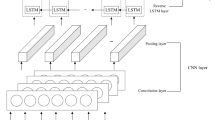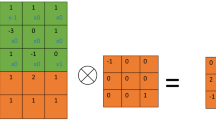Abstract
Online sellers often produce redundant and lengthy product textual titles with extra information on e-commerce platforms to attract the attentions of customers. Such overlength product titles become a problem when they are displayed on mobile applications. In this paper, the problem of refining redundant and overlength product titles is studied to generate concise and informative titles. First, the task of refining the long title is transformed into a sequential classification problem by predicting whether a word in original title will remain in finial short title. Then, a self-attention-based neural network is proposed to extract the most informative words from original title to construct the short title. The proposed basic model is also extended with a gated recurrent unit (GRU) neural network and a gating mechanism to improve the position encoding process and learn the weights of encoding features from different directions. Moreover, an algorithm is designed to construct the datasets for redundant product title compression analysis based on the open dataset LESD4EC. Finally, extensive experiments are implemented on the rebuilt datasets to demonstrate the effectiveness and efficiency of the proposed methods. The experimental results show that the proposed methods significantly outperform the state-of-the-art methods based on the precision, recall, F1 value and the mean absolute error, as well as runtime and space cost.




Similar content being viewed by others
Notes
This dataset can be found at https://github.com/pangolulu/product-short-title
References
Chen I, Ni C, Lim BP, Chen NF, Lee C (2015) A keyword-aware grammar framework for lvcsr-based spoken keyword search. In: 2015 IEEE international conference on acoustics, speech and signal processing, ICASSP 2015, South Brisbane, Queensland, Australia, April 19-24, 2015, pp 5196–5200
Chen M, Tian Y, Yang M, Zaniolo C (2017) Multilingual knowledge graph embeddings for cross-lingual knowledge alignment. In: Proceedings of the twenty-sixth international joint conference on artificial intelligence, IJCAI 2017, pp 1511–1517
Chopra S, Auli M, Rush AM (2016) Abstractive sentence summarization with attentive recurrent neural networks. In: Proceedings of the 2016 conference of the North American chapter of the association for computational linguistics: human language technologies. Association for Computational Linguistics, San Diego, pp 93–98
Cohn T, Lapata M (2008) Sentence compression beyond word deletion. In: Proceedings of the 22nd international conference on computational linguistics (Coling 2008), pp. 137–144. Coling 2008, Organizing Committee, Manchester, UK
Cohn T, Lapata M (2013) An abstractive approach to sentence compression. ACM Trans Intell Syst Technol 4(3)
Erkan G, Radev DR (2004) Lexrank: Graph-based lexical centrality as salience in text summarization. J Artif Int Res 22(1):457–479
Gong Y, Luo X, Zhu KQ, Ou W, Li Z, Duan L (2019) Automatic generation of chinese short product titles for mobile display. In: Proceedings of the AAAI Conference on Artificial Intelligence, vol 33. pp 9460–9465
Goodfellow IJ, Pouget-Abadie J, Mirza M, Xu B, Warde-Farley D, Ozair S, Courville AC, Bengio Y (2014) Generative adversarial nets. In: Advances in Neural Information Processing Systems 27: Annual Conference on Neural Information Processing Systems 2014, December 8-13 2014, Montreal, Quebec, Canada, pp. 2672–2680
Hochreiter S, Schmidhuber J (1997) Long short-term memory. Neural Comput 9(8):1735–1780
Kågebäck M, Mogren O, Tahmasebi N, Dubhashi D (2014) Extractive summarization using continuous vector space models. In: Proceedings of the 2nd workshop on continuous vector space models and their compositionality (CVSC). Association for Computational Linguistics, pp 31–39
Kingma DP, Ba J (2015) Adam: A method for stochastic optimization. arXiv:1412.6980
Knight K, Marcu D (2002) Summarization beyond sentence extraction: A probabilistic approach to sentence compression. Artif Intell 139(1):91–107
Luong T, Pham H, Manning CD (2015) Effective approaches to attention-based neural machine translation. In: Proceedings of the 2015 conference on empirical methods in natural language processing, EMNLP 2015, Lisbon, Portugal, September 17-21, 2015. The Association for Computational Linguistics, pp 1412–1421
McDonald R (2006) Discriminative sentence compression with soft syntactic evidence. In: 11th conference of the European chapter of the association for computational linguistics. Association for Computational Linguistics, Trento, Italy
McDonald RT (2007) A study of global inference algorithms in multi-document summarization. In: Amati G, Carpineto C, Romano G (eds) Advances in information retrieval, 29th European conference on IR research, ECIR 2007, Rome, Italy, April 2-5, 2007, Proceedings, Lecture Notes in Computer Science, vol 4425. Springer, pp. 557–564
Mihalcea R, Tarau P (2004) Textrank: Bringing order into text. In: Proceedings of the 2004 conference on empirical methods in natural language processing, EMNLP 2004, A meeting of SIGDAT, a Special Interest Group of the ACL, held in conjunction with ACL 2004, 25-26 July 2004, Barcelona, Spain. pp 404–411
Nallapati R, Zhai F, Zhou B (2017) Summarunner: A recurrent neural network based sequence model for extractive summarization of documents. In: Proceedings of the thirty-first AAAI conference on artificial intelligence, February 4-9, 2017, San Francisco, California, USA., pp 3075–3081
Nallapati R, Zhou B, dos Santos CN, Gülçehre Ç, Xiang B (2016) Abstractive text summarization using sequence-to-sequence rnns and beyond. In: Proceedings of the 20th SIGNLL conference on computational natural language learning, CoNLL 2016, Berlin, Germany, August 11-12, 2016. pp 280–290
Rose S, Engel D, Cramer N, Cowley W (2010) Automatic keyword extraction from individual documents. Text Min Appl Theory 1:1–20
Rush AM, Chopra S, Weston J (2015) A neural attention model for abstractive sentence summarization. In: Proceedings of the 2015 Conference on empirical methods in natural language processing, EMNLP 2015, Lisbon, Portugal, September 17-21, 2015. pp 379–389
Rush AM, Chopra S, Weston J (2015) A neural attention model for abstractive sentence summarization. In: Proceedings of the 2015 conference on empirical methods in natural language processing. Association for Computational Linguistics, Lisbon, pp 379–389
See A, Liu PJ, Manning CD (2017) Get to the point: Summarization with pointer-generator networks. In: Proceedings of the 55th annual meeting of the association for computational linguistics, ACL 2017, Vancouver, Canada, July 30 - August 4, Volume 1: Long Papers. pp 1073–1083
Sun F, Jiang P, Sun H, Pei C, Ou W, Wang X (2018) Multi-source pointer network for product title summarization. In: Proceedings of the 27th ACM international conference on information and knowledge management, CIKM 2018, Torino, Italy, October 22-26, 2018. pp 7–16
Sun X, Wang H, Xiao Y, Wang Z (2016) Syntactic parsing of web queries. In: Proceedings of the 2016 conference on empirical methods in natural language processing, EMNLP 2016, Austin, Texas, USA, November 1-4, 2016. pp 1787–1796
Vaswani A, Shazeer N, Parmar N, Uszkoreit J, Jones L, Gomez AN, Kaiser L, Polosukhin I (2017) Attention is all you need. In: Advances in neural information processing systems 30: annual conference on neural information processing systems 2017, 4-9 December 2017, Long Beach, CA, USA. pp 5998–6008
Vinyals O, Fortunato M, Jaitly N (2015) Pointer networks. In: Advances in neural information processing systems 28: annual conference on neural information processing systems 2015, December 7-12, 2015, Montreal, Quebec, Canada. pp 2692–2700
Wang J, Tian J, Qiu L, Li S, Lang J, Si L, Lan M (2018) A multi-task learning approach for improving product title compression with user search log data. In: Proceedings of the 30th innovative applications of artificial intelligence (IAAI-18), New Orleans, Louisiana, USA, February 2-7, 2018. pp 451–458
Zhang J, Zou P, Li Z, Wan Y, Pan X, Gong Y, Yu PS (2019) Multi-modal generative adversarial network for short product title generation in mobile e-commerce. In: Proceedings of the 2019 conference of the North American chapter of the association for computational linguistics: human language technologies, NAACL-HLT 2019, Minneapolis, MN, USA, June 2-7, 2019, vol 2 (Industry Papers). pp 64–72
Zhao WX, Jiang J, He J, Song Y, Achananuparp P, Lim E, Li X (2011) Topical keyphrase extraction from twitter. In: The 49th annual meeting of the association for computational linguistics: human language technologies, proceedings of the conference, 19-24 June, 2011, Portland, Oregon, USA. pp 379–388
Acknowledgements
The authors thank the anonymous reviewers for their valuable comments and suggestions to improve the quality of this paper. This work was partially supported by the National Natural Science Foundation of China (No. 62062027, U1711263), the Guangxi Natural Science Foundations (No. 2018GXNSFDA281049, 2020GXNSFAA159012, 2018GXNSFAA281326), the Science and Technology Major Project of Guangxi Province (No. AA19046004), the Innovation Project of Guest Graduate Education (No. 2019YCXS040) and the project of Guangxi Key Laboratory of Trusted Software (No. kx201916).
Author information
Authors and Affiliations
Corresponding author
Additional information
Publisher’s note
Springer Nature remains neutral with regard to jurisdictional claims in published maps and institutional affiliations.
Rights and permissions
About this article
Cite this article
Lin, Y., Fu, Y., Li, Y. et al. Self-attention-based neural networks for refining the overlength product titles. Multimed Tools Appl 80, 28501–28519 (2021). https://doi.org/10.1007/s11042-021-10908-x
Received:
Revised:
Accepted:
Published:
Issue Date:
DOI: https://doi.org/10.1007/s11042-021-10908-x




